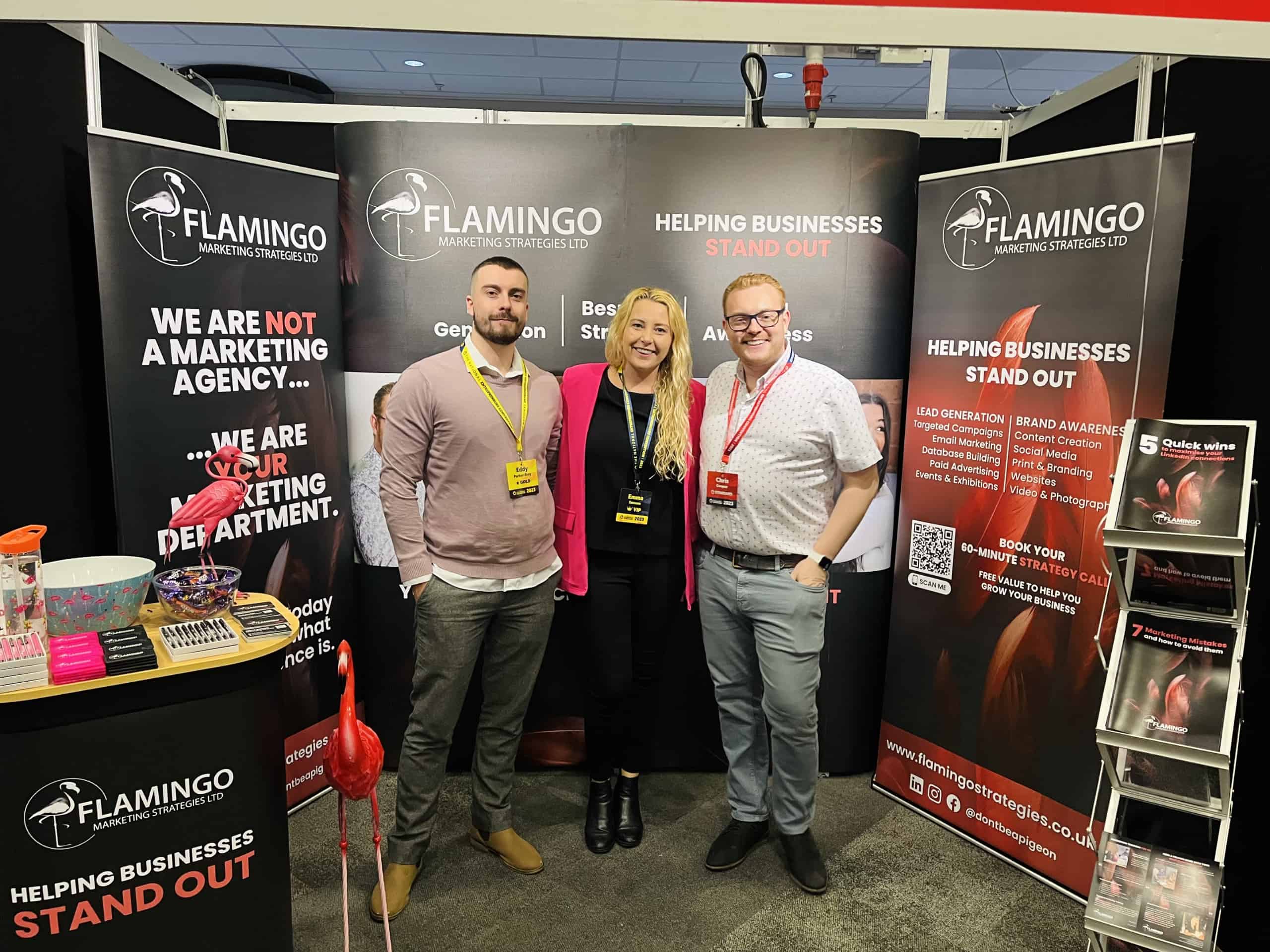Whatever industry you’re in, everyone in your team has one priority in common – the desire to feel heard, respected and happy in the workplace.
The writer Annie Dillard famously said:
“How we spend our days is, of course, how we spend our lives.”
It’s often overlooked how a person’s experience at work can impact their entire existence.

Don’t get us wrong – many businesses have the intention of building a positive culture, but adopt poor habits or get stuck in their ways, preventing their teams from enjoying their work life and the business from meeting its true potential.
When these habits stack up and go unaddressed, only one thing happens – it creates a toxic work environment.
So, what are the tell-tale signs of a toxic workplace, what additional issues can it cause if things don’t improve and what steps can businesses take to make their team culture more positive?
Here are some of our thoughts.
Signs of a toxic workplace
If you think your environment is toxic, the first thing you need to do is identify where your business is going wrong.
Here are a few indicators that your workplace may be toxic…
- Your team has a fear of your CEO or MD
Contributing to a positive workplace culture is often listed as a priority in company policies and contracts. However, a toxic work environment often starts at the top, with CEOs and Managing Directors.

We believe companies succeed when everybody is willing to share ideas, so when someone at the top of the business shuts down suggestions from other team members, things can become stagnant, progress is prevented, and employees stop sharing their thoughts for fear of them being disregarded. It’s one of the fastest ways to demotivate your staff and make them feel insignificant. Give your team a chance to shine – they might just surprise you!
- There is a culture of blame
There is a general assumption in some circles that high-pressure work environments result in stronger performance. But that isn’t always the case.
If you push staff too hard, they will crack!
When the pressure mounts, mistakes are made and, when mistakes are made, someone gets the blame…
It’s even more damaging to have a culture of blame if you don’t praise your team for their best work. A landmark 2001 study shows that the brain responds more considerably to negative experiences than good ones – so your blame isn’t something your team will forget!

A culture of blame can be an easy trap to fall into, but it can make your team nervous to submit work and, in turn, more likely to slip up, leaving you in a vicious circle. In fact, it can often make it harder to spot mistakes as they end up trying to bury them out of fear of getting told off!
- Poor communication
According to a SHRM (Society for Human Resource Management) study, almost 3 in 10 employees believe their managers don’t encourage a culture of open and transparent communication.
Additional research has found that employees look to their leaders for cues on how to behave. This means that poor communication from management often seeps into the rest of the organisation.
In some businesses, CEOs and MDs have no interest in speaking to those at the bottom of the organisational structure, with instruction being trickled down like a game of workplace ‘Chinese Whispers’.
Unlike Chinese Whispers however, this communication results in mistakes and a distinct lack of cohesion, feeding into the culture of blame.
Not only does this translate poorly when it comes to work, but it also means employee recognition often falls by the wayside and team members move in cliques, failing to build meaningful relationships across the workforce.
What you can do to make things better
If you’re conscious that some of these traits are recognisable in your organisation, here are a few suggestions of ways to start making a change.
- Lean on HR
If you don’t have an HR team member or an external HR specialist, you’re certainly missing a trick.
At Flamingo, we don’t need a full-time HR specialist on the team. Our MD, Emma, has built a brilliant relationship with Gemma Long at HR & Co., who does the job just perfectly!
HR teams or specialists can help with recruitment processes, company policies and leave and absence, but also support continued professional development, manage performance reviews and help build out a positive company culture if it’s not something that can be looked after in-house.
Emma invests a lot of time with the team individually, making sure they are happy and constantly progressing, but not every MD has that luxury, especially if they are time-poor – or they just aren’t good with people management.
If you’re struggling to get to the root of the problems, external HR companies can help!
- Ensure that there is someone there to listen!
Even within a toxic workplace, your employees may have colleagues they feel comfortable speaking to.
Encouraging them to chat with other senior team members is a helpful way to get new perspectives and pool ideas about making things better. Each team or department within a company should have at least one person present whom the others feel that they can share their ideas, thoughts and feelings with. If you are a small team, there must be someone other than the MD who is close to the team and is there to listen and support them.
So many CEOs or MDs ‘fall into management’ or start a business because they are good at something, technical perhaps, but have no people management skills, whatsoever.
These are environments where toxicity is often most present, because they often care more about the ‘processes’ and ‘finances’, than the people responsible for them...
- Take your team members to events
If you attend events, expos or conferences, take your team members with you!
It’s a great opportunity to empower your employees to boost their networking skills, build mutual trust and provide more reasons for them to be passionate about the business.

- 1:1s
Monthly 1:1 sessions with your team members provide a valuable opportunity for managers and employees alike.
Not only do they allow managers to discuss performance, address challenges or make suggestions to their staff, but they also let team members air their problems, share their feedback and make suggestions of their own. However, this does require managers to be open to criticism and the suggestions put forward by their employees.
- Give your team freedom to experiment
Even though your workplace probably has an organisational structure in place, it doesn’t mean all the best ideas come from the top.
Have you ever thought about the untapped potential amongst your team? It could be time to empower them to try some ideas and, you never know – they might just work!
The benefits of a happy work environment
- A happier team
Writer and consultant Jessica Pryce-Jones found that the average person will spend 90,000 hours at work over their lifetime… yes, you read that right – not 9,000… 90,000!
And that was in 2010 – so it’s probably gone up!
With so much time taken up by work, we believe people are well within their rights to enjoy what they do and have positive relationships with their colleagues.

At Flamingo, we spend a whole day each month on our business, not in it. Our monthly ‘Flamingo Days’, filled with bright ideas, bold plans and proud reflections, are truly something to look forward to… (and not just because of the pizza 🍕)
Everyone on the team shares their ideas, however ‘out there’ they may be – no idea is too crazy, and we see what can be implemented.
We make the effort to celebrate each other’s birthdays, wear comfortable clothes on ‘Dress Down Fridays’ and spend time together outside work too!
- Increased productivity
Did you know, according to a study by Oxford University’s Saïd Business School, happiness in the workplace increases productivity by 12%?
A positive culture inspires creativity, boosts collaboration and allows team members to get more done – better!
After all, when you have friendships at work, you want to work hard for each other!
- Decreased staff turnover
You can never prevent staff turnover entirely. A role can be perfect for someone at one time, and then a year or two later, their personal situation changes.
Nevertheless, building and sustaining a positive work culture will certainly cut down the number of team members you lose.
After all, who wouldn’t want to work within a fun yet productive team. A team that plays together, stays together!
- Decreased client turnover
As well as affecting your staff, a negative work environment can seep into client relationships too.
A poor environment makes for poorer relationships amongst the team, lower productivity, less passion and, often, inadequate results.
Clients can often tell when things aren’t running smoothly and could link patterns of poor performance or dwindling results to deeper-lying issues within your culture.
That’s why, at Flamingo, we like our clients to treat us like an extension of their own team. We’re not faceless robots, bashing away on keyboards and answering phone calls. We have multiple means of contact for each of our clients and many of them visit our office regularly, thanks to our friendly open-door policy.
- Strong relationships with partners and suppliers
Most companies want to work with like-minded people. So, if you want to find high-performing businesses to partner with, who treat their team with respect, and therefore treat you with respect – you need to behave the same way! Otherwise, it will never work long term.
As a marketing agency, over the years we have been exposed to lots of different businesses and how they are run – and it never fails to amaze us how some MDs behave. Emma is very protective of the Flamingo team and is a shining example of ‘treat others how you wish to be treated’.
She invests time and effort into her team to ensure they are happy, respected and valued – so she won’t stand for anyone outside of the business, inflicting misery within Flamingo where toxicity is not welcome.

If you have clients, suppliers or associates bringing negativity into your happy work environment, the impact that could be having on your team is often just as damaging as someone internally, and you don’t need to put up with it.
To conclude...
Identifying your toxic workplace culture may not be easy, but just realise – no business is a lost cause!
Whatever your workplace is like, we hope you’ve picked up some helpful advice.
If you’re worried about your workplace culture, our MD Emma is always willing to chat, and let us know how you’re making your work a more positive place to be!

